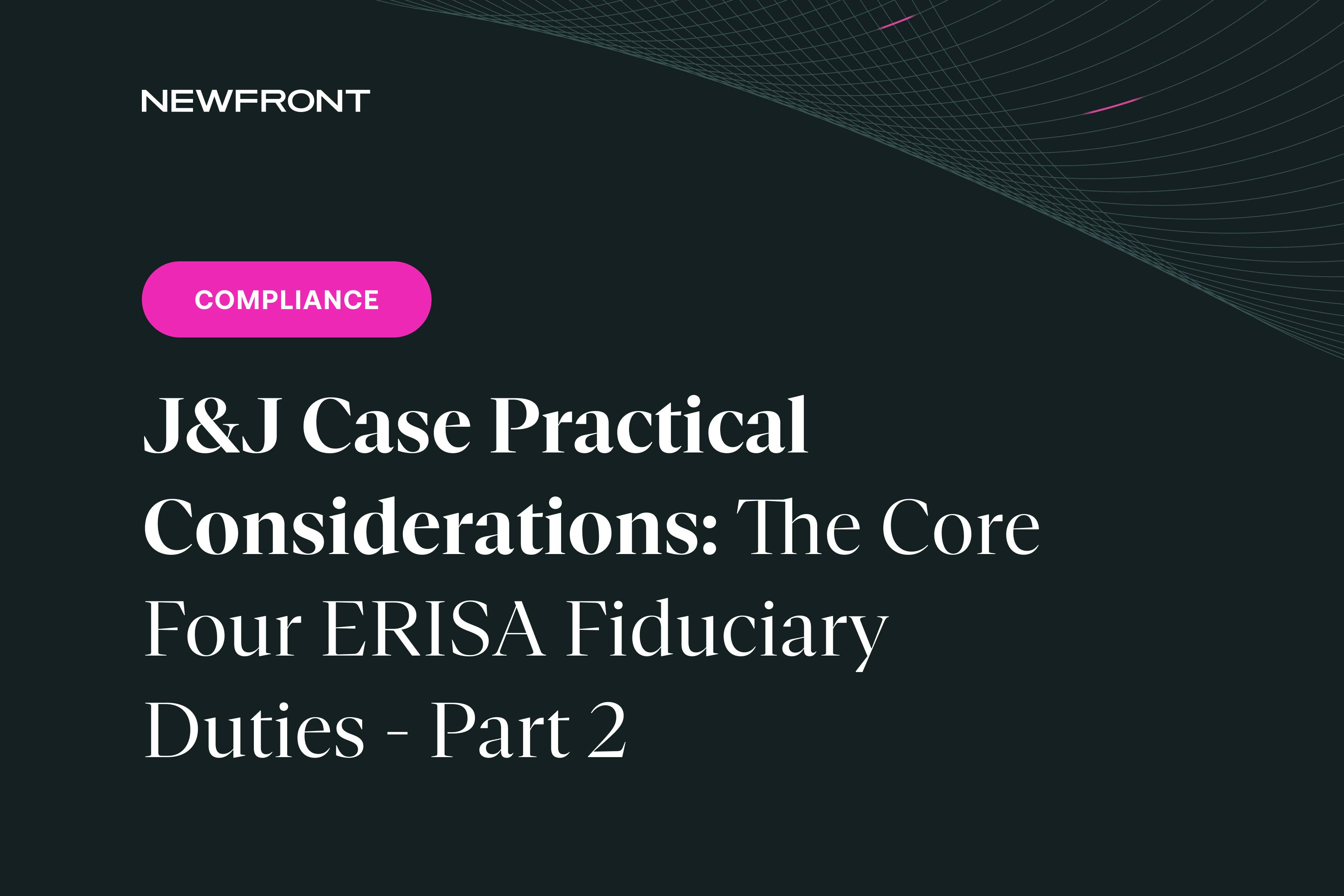How the ACA Applies to Contingent Workers
By Brian Gilmore | Published June 28, 2019
Question: What are the ACA rules surrounding offering benefits to the contingent workforce, and how do most employers approach the issue?
Compliance Team Response:
The “contingent workforce” category generally breaks down into three practical groups that each require a separate analysis:
Employees on the Employer’s Payroll
Employees Hired Through an Outside Staffing Firm
Properly Classified Independent Contractors
The following summary addresses each group of the contingent workforce in turn:
Contingent Workers: Employees on Employer’s Payroll
With respect to contingent workers such as temps and interns (or other similar categories like on-call or casual employees) who are employees on the employer’s payroll, the ACA employer mandate generally does not provide any special rules. This means that in most cases the employer will have to offer at least a medical plan option to these types of full-time contingent workers by no later than the first day of the fourth full calendar month of employment to avoid potential penalties.
Employers seeking to reduce the costs associated with offering benefits to contingent workers have several approaches to consider:
Extended Eligibility/Waiting Period: Many employers choose to impose a longer eligibility and/or waiting period for contingent workers. For example, many employers offer coverage that is effective as of the first day of the fourth full calendar month of employment (per the standard ACA limited non-assessment period for new full-time hires).
Limited Medical Plan Options: Some employers choose to offer a limited number of fully insured medical plan options. For example, only a low-cost HMO is available to contingent workers.
Medical Only: Some employers choose to offer only medical coverage. The ACA employer mandate does not require an offer of dental or vision to avoid potential penalties.
Excluding Spouses: A few employers choose to offer coverage only to the employees and their children to age 26 (including at least biological, adopted, and placed for adoption children) because the employer mandate does not require offering coverage to the spouse, domestic partner, foster children, stepchildren, or children for whom the employee is the legal guardian.
B Penalty Liability: A narrow group of employers chooses to accept “B Penalty” liability for these workers by not offering coverage when they are very confident that they will always remain over the 95% offer of coverage threshold to avoid the very large “A Penalty. This approach is generally not recommended because of the potentially enormous A Penalty consequences where a mistake results in offering coverage to less than 95% of full-time employees.
Note: Different contribution structures for contingent workers generally is not an option because of the Section 125 nondiscrimination rules that govern contributions.
Full details available here:
Contingent Workers: Employees Hired Through an Outside Staffing Firm
Contingent workers who are payrolled through an outside staffing firm are in almost all cases considered common-law employees of the worksite employer (because it will manage and direct their duties). Therefore, the same ACA employer mandate requirements apply even though they are not on the employer’s payroll.
However, the ACA rules permit the employer to delegate the offer of coverage requirement to the outside staffing firm as long as two requirements are satisfied:
The outside staffing firm offers coverage meeting ACA standards to full-time workers; and
The outside staffing firm charges the employer an additional fee for those workers who elect to enroll in the outside staffing firm’s offer of coverage.
This results in the employer being treated as having offered coverage through the outside staffing firm plan. Nearly all outside staffing firm arrangements now accommodate this approach.
Note: While it is theoretically possible for the employer to design its plan to provide eligibility under the employer’s plan to these workers, it is very difficult to collect the employee-share of the premium because they are not on the employer’s payroll. Generally, that could only be done via after-tax payments in a manner similar to COBRA. It’s therefore an uncommon approach.
Full details available here:
III. Contingent Workers: Properly Classified Independent Contractors
With respect to contingent workers who are properly classified independent contractors, the ACA employer mandate does not apply. Nor is there an option to offer coverage under the employer’s plan. Offering coverage to an independent contractor would create a Multiple Employer Welfare Arrangement (MEWA), which is problematic for a long list of reasons that essentially make it infeasible.
A common alternative approach is to offer additional taxable compensation (with a gross-up if desired) to the independent contractors to purchase coverage on the Exchange. This could even be done via a direct reimbursement because the ACA prohibition on reimbursement of an individual policy does not apply to properly classified independent contractors.
The ACA employer mandate rules add yet another reason why proper classification of workers as common-law employees or independent contractors is always of crucial importance. One of the many potentially costly consequences of a retroactive reclassification of independent contractors to common law employees would be A Penalty exposure for failure to offer coverage to at least 95% of employees.
Full details available here:

Brian Gilmore
Lead Benefits Counsel, VP, Newfront
Brian Gilmore is the Lead Benefits Counsel at Newfront. He assists clients on a wide variety of employee benefits compliance issues. The primary areas of his practice include ERISA, ACA, COBRA, HIPAA, Section 125 Cafeteria Plans, and 401(k) plans. Brian also presents regularly at trade events and in webinars on current hot topics in employee benefits law.
Connect on LinkedIn

